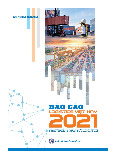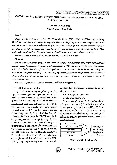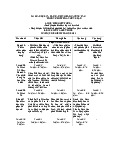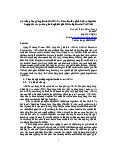





Preview text:
Highlights in Business, Economics and Management WEPM 2023 Volume 22 (2023)
Flexible Supply Chain Efficiency Problems of Fast Fashion Brands- T - aking ZARA as an Example Ming Qin * School of Business, M
acau University of Science and Technology, Macao, 999078, China
* Corresponding Author Email: 1220018987@student.must.edu.mo
Abstract. This paper takes Zara Company as the main research object, analyzes the flexible supply
chain that forms its advantages, and divides it into four parts, and then obtains the revelation of
domestic fast fashion operations from it one by one. ZARA is a Spanish brand and is famous for it’s
unique speedy supply chain. In recent years, ZARA has quickly won the favor of young people
around the world. The research concludes that ZARA has advantages in the design phase through
global procurement and learning methods. In terms of production, Zara achieves production flexibility
through smal batch precision supply with close upstream and downstream connections and the
establishment of semi-finished product warehouses. In addition, Zara mainly achieves delivery
flexibility through the location selection of logistics centers and the establishment of semi-finished
product warehouses. The research in this paper provides experience and inspiration for the flexible
supply chain of domestic fast fashion enterprises.
Keywords: Flexible supply chain; Zara; fast fashion; process optimization. 1. Introduction
In 2002, the Spanish brand MANG
O and the Japanese brand UNIQLO entered the Chinese market,
which opened the prelude for foreign fast fashion brands to enter the Chinese market. With their
unique "speedy supply chain" and keen sense of fashion, these companies have quickly won the favor
of young consumers and have gained a foothold in the Chinese market [1]. In recent years, more and
more consumers have begun to focus on personalized consumer experience. However, fast fashion
brands have not paid enough attention to this problem, and its shortcomings are beginning to appear
gradually, such as unstable quality, a single purchasing channel and so on. In this regard, fast fashion
brands can take advantage of new technology to optimize their product supply strategy and inject new
development vitality into the enterprise.
One of the typical representatives of fast fashion brands, ZARA, its brand positioning of clothing
is affordable and fashionable. To fast, agile, multi-category, small-scale, large terminal for the brand's
competitive strategy. Most of ZARA's consumer groups are urban young people aged 20-30. Existing
papers mostly focus on ZAR 's supply A
chain risk management and inventory management and gain
insights. For example, David Mou mentioned the significance and help of utilizing "zero inventory"
for Chinese enterprises in the study of zero inventory management of large and medium-sized
manufacturing enterprises in China under the supply chain management environment [2]. There are
fewer articles on ZARA's flexible management, and ZARA's success is closely related to its advanced
flexible supply chain. A flexible supply chain, also known as a "highly flexible supply chain", is a
new supply model adopted by the e-commerce apparel industry in recent years to cope with the
instability of the traditional supply system and the obstruction of the supply chain operation stage.
Compared with the highly solidified traditional supply management system, the main components of
the flexible supply chain have distinctive "flexible" characteristics [3]. In the current situation of
uncertainty and personalization, ZARA's flexible supply chain has played a great role in withstanding
the test of the epidemic and catering to the personalized needs of customers. Among them,
personalized consumption refers to the consumers out of their own income level, the improvement of
the level of knowledge and the abundance of goods and services, which makes the consumer behavior
more mature. Consumer demand is more complex + consumer psychology is more stable; consumers
no longer buy goods just to meet the demand for things, but mainly value the personality 363
Highlights in Business, Economics and Management WEPM 2023 Volume 22 (2023)
characteristics of the goods, and hope that through shopping to show themselves, and achieve spiritual
satisfaction. Therefore, it is especially necessary to study the flexible supply chain management problem of ZARA.
In view of this, this paper analyzes from the perspective of a flexible supply chain how domestic
fashion brands should improve their strategies so as to cope with the changing environment and
consumers' personalized needs. This paper takes the fast fashion brand ZARA as the research object
studies the flexible supply chain management problem, and puts forward suggestions on how fast
fashion enterprises can better satisfy consumers' personalized demands. 2. Introduction of ZAR 's A development status ZAR
A is a company focusing on apparel design, production and sales, which has three major
product lines women's clothing, men's clothing, children's clothing, etc., and each product line has an
independent team to participate in the design. Three major clothing products in women's clothing are
in the core position. It also includes the BASIC series, TRF series and WOMAN series of three major
styles. BASIC series is daily wear, and the design both pursues high quality and emphasizes the practicality of daily styl .
e The price of the sale price using the affordable sale to meet the majority of
customers to buy the needs. ZARA not only has to meet the needs of young women in pursuit of
fashionable tastes, but also has to meet the young women's pursuit of fashion taste, love of beauty
characteristics, ZARA has launched a special TRF series of women's clothing. At the same time, It
launched the collection of the world's new style WOMAN series of women's clothing. The design
team pursuit a high-end quality as the goal. Based on the exquisite material and cutting, coupled with
the designer's understanding of the trend of fashion and inspiration, this set of products ultimately
became one of the classic women's clothing series ZARA.
ZARA covers a wide range of areas beyond clothing. For example, in 2016 ZARA released its
first perfume collection. In the two years since then, the perfume line has continued to grow higher.
In December 2018 ZARA Uitimate is the first series of products released by ZARA with the theme
of fall and winter makeup, and the British make-up artist Pato McGrath participated in the design and
direction. In addition, for the Chinese market, ZARA launched a limited edition "piggy bag" in the
Chinese New Year of the Pig, combining traditional Chinese elements and fashion, which was very
popular among consumers, especially young female consumers, and attracted a large number of
consumers, especially young women. Attracted a large number of consumers patronize, but also to
make their own competitive position is constantly strengthening.
According to the fashion brand Zara (ZARA) 2022 published corporate annual report, its sales
jumped 21% to 23.76 billion euros. Zara's parent company, the world's largest apparel retailer Inditex
announced the interim results of fiscal year 2022. The results show that for the six months ended July
31, 2022, the company's sales rose 24.5 percent year-on-year to 14.8 billion euros (roughly Rs. 102.8
billion); net profit rose 41 percent to 1.8 billion euros (roughly Rs. 12.5 billion).
3. Zara's flexible supply chain management
The supply chain advantage of ZAR
A Group mainly lies in the flexible supply chain created by
the synergy between high-speed distribution and highly flexible production capacity. Specifically, ZAR 's
A success lies in its use of inventory management in every aspect of the entire supply chain,
every point of the supply chain in collaboration with each other. The entire supply chain can be
divided into product design, procurement and production, logistics and transportation and sales of
four major parts. Specifically analyzed as follows. 3.1. Product Design ZAR 's design A
mainly lies in the control of fashion trends, the product is basically an imitation of
the trend, rather than most of the enterprise's original and original design of the product. So ZARA's 364
Highlights in Business, Economics and Management WEPM 2023 Volume 22 (2023)
design link is based on the original fashion products to imitate and add Zara's style elements, so as to
come up with products for each season. Under the traditional model, the whole cycle of product design,
pattern making, purchasing and distribution takes more than 300 days. However, the fashion trend
may change drastically in 300 days or so, and what was popular in the last season may be outdated,
while the clothes that do not meet the trend aesthetics will be sold out and become inventory. ZARA,
because of the special nature of its design process synchronizes with the trend. This speed of supply
comes from ZARA's team's use of the "triangulation" team design model. Every new product is
triangulated before it goes on sale. The first corner is the designer, every year ZARA's nearly 400
designers will be through the fashion brand show, the Internet platform social media, and other
channels to grasp first-hand news about the fashion trend [4]. There are also fashion buyers all over
the world who will apply the fashion trend models from all over the world to the designers' workbench
for inspiration. The second corner is the commercial manager. The commercial manager is
responsible for communicating with suppliers and self-owned factories, and for adjusting the prices
of new products. The third corner is the agents of each store, they are the closest link to the famous
customers. Each store through the information system to report the sales situation to the headquarters.
3.2. Flexible production and inventory links
Inventory management is the goal of inventory costs and a variety of benefits to obtain a trade-off
between the full play of inventory functions to reduce costs. First of all, enterprises need to ensure
that the inventory of raw materials to ensure that the normal course of production, and the amount of
inventory must be the right amount. If the inventory is too much, it will take up the cost and the
operating capital of the enterprise, and even eventually lead to the break of the capital chain. If the
inventory is too little, it will produce a situation where the demand exceeds the supply, which will
lead to delayed delivery, and trigger the phenomenon that the enterprise's credibility is insufficient.
ZARA has a precise production model. ZARA has implemented the implementation of a small-scale
multiple production model, the general brand season cannot be sold products can only be dealt with
price reductions to reduce the occupation of inventory. But ZARA's tailgate is not much, because at
the beginning of each quarter, each product only produces 15% of the expected total sales, and then
puts it into the stores to keep an eye on the sales.
After being put into stores, ZARA keeps an eye on the sales situation and makes additional
production plans for small batches of the best-selling products to stop losses in time. Flexible
production capacity requires every link in the supply chain to have the ability of self-regulation, "less
and accurate" production supply [5]. ZARA's business production model has great significance for
domestic apparel enterprises. Most of the domestic apparel brands at the beginning of each season
produce a sufficient amount of ready-made clothes in stores, and then lose contact with the stores, to
devote their energy to the next season's production. But ZARA Clothing through the information
system, the stores and the headquarters of the close contact, from design to production, to
transportation to sales, the formation of a complete and flexible supply chain system.
This supply chain system is very important, for example, the outbreak of the new crown epidemic
at the end of 2019 made the New Year's shopping season suddenly cold, which reflects the importance
of rapid replenishment of small quantities [6].
At the same time, ZARA has its own factory, eliminating the need for outsourcing, which helps to
save time and control the production process, thus optimizing the amount of inventory. 3.3. Flexible distribution
ZARA has an efficient global distribution network. From the design of a product to its placement
in stores for sale, it takes 6-9 months for a general apparel company, while ZARA can do it in just 12
days [7]. In order to achieve this rapidity, Zara's distribution requirements for logistics are also unique.
ZARA Group's logistics system is also very mature. Located in La Coruña (the company's
headquarters), the Atelsius warehouse complex covers an area of 50 square meters, with underground
tunnels linking the surrounding factories, and the garments being shipped are lowered onto a conveyor 365
Highlights in Business, Economics and Management WEPM 2023 Volume 22 (2023)
belt that is 212 kilometers long. In the heart of the logistics center, there are professionals in charge
of folding and packing, which can be differentiated according to the type of pigment, and can be bent
into 80,000 garments in one hour for large packages and distribution. As the ZARA Group continued
to grow, ZARA developed a dual supply chain, with ZARA's European supply chain for fashion
garments and its Asian supply chain for basic garments. In 2004, Zaragoza opened the Zaragoza
Logistics Center, which covers 123,000 square kilometers and is located close to the highway, which
connects to 2 European highways. There are two main logistics and distribution centers in Spain,
which regularly receive ready-to-wear garments made in Asia and Europe for direct delivery twice a
week to thousands of stores around the world. Generally speaking, ready-made clothes in the logistics
center take less than 8 hours, European stores in 24 hours to receive orders, in real time. Sales to orde
cannot be avoided not knowing the sales capacity and the existing inventory caused by the
phenomenon of inventory backlog, so in order to ensure that the clothing can be on time on the shelves
of the ZARA factory's production of small production lines, strictly in accordance with the order of
the production of clothing, a batch of clothing production can be completed in time to reach three
days. If there are any unsold garments in the stores, they can be returned to the logistics center and
then quickly distributed to other stores. This high-speed supply chain not only requires high-quality
courier services but also has high requirements for the location of logistics and distribution centers
[8]. In order to respond to the demand for personalization, ZARA has established a semi-finished
goods warehouse to store undyed fabrics, which are then dyed and cut according to demand after
receiving orders from the headquarters. And ZARA's logistics distribution center near the distribution
of more than 400 collaborators, the fabric can be processed according to the demand for ready-made
clothes and quickly shipped back to the logistics center. It can be suggested that domestic enterprises
should pay attention to the maturity of the local infrastructure when choosing a location and study
whether the advantages of the industry in the region are concentrated.
ZARA's distribution in Europe also gives ZARA Group in China logistics site selection advice,
enterprises can establish multiple distribution centers, speed up the distribution speed, and choose a
convenient and fast transportation logistics center to comply with the flexible supply chain. 3.4. Flexible sales process
ZARA Group adopts a flexible sales strategy in the sales process. In the 1950s, Prof. Mc Cathy
proposed the 4p theory "application" [9]. The theory consists of four elements: product strategy, price
strategy, channel strategy and promotion strategy.
The following is an exhaustive description.
3.4.1. Product Strategy (Product)
In order to attract more new and old customers, companies need to create unique features in many
aspects of product design, research and development, packaging and style, etc., and at the same time
take into account the needs of the Japanese standard market in product positioning, and use the
appropriate marketing strategy. 3.4.2. Price strategy (Price)
The core issue of price strategy lies in how to price the product, and this pricing method can be
divided into penetration pricing and skimming in two different ways.
In pricing strategy, penetration pricing refers to the initial entry of the product into the market, by
setting a relatively low price to quickly occupy the consumer base to obtain more market share, and
short-term profits at the expense of more long-term benefits. Compared to other pricing methods,
skimming pricing is when a product enters the market with a higher price.
A pricing strategy that aims to quickly recoup investment and make a good profit before competitors launch similar products. 366
Highlights in Business, Economics and Management WEPM 2023 Volume 22 (2023) 3.4.3. Channel Strategy Place
Channel strategy refers to the product from the manufacturer, through a series of marketing means,
it will be delivered to the final consumer, so as to realize the sales and promotion of the product.
Through effective channels, enterprises can not only provide customers with a convenient consumer
service experience but also realize the reduction of costs, thus improving the economic efficiency of
enterprises. According to the differences in distribution channels, they can be categorized into two
forms: direct distribution and indirect distribution. Among them, direct distribution refers to the
product directly from the manufacturer to the consumer without the need to go through the
intermediary; indirect distribution refers to the intermediary link through the intermediary after the
product is produced by the manufacturer in order to pass it to the final consumer.
3.4.4. Promotion Strategy (Promotion)
Enterprises use discounts, gifts and rewards to boost sales, and in the short term to quickly capture
market share the strategic means known as the promotion strategy, this strategy can effectively
increase product awareness, cultivate more loyal to the product brand of customers, so that the
enterprise and the customer to ask the formation of benign supply and demand relationship [10].
The 4P theory helps to better understand the market consumer preferences and needs, and bette
formulate sales strategies. Thus, consumers have the desire to buy the product, so as to seize more
consumers. Step by step to confirm the position in the consumer market.
However, ZARA is now facing a dilemma: The quality of products is not qualified. Recently, the
Hainan Provincial Market Supervision Administration announced the first half of 2020 in Hainan
Province circulation area shirt product quality supervision and sampling results show that ZARA
commercial (Beijing) Co., Ltd. production of ZARA's batch of shirts detected unqualified fiber
content. According to China Data News Network incomplete statistics, ZARA has been on the market
supervision department sampling "blacklist" for three consecutive years. It is suggested that ZARA
brand should further standardize the testing standards, in the supply chain manufacturing links to
strengthen the layers of quality control, to achieve fast and qualified supply [11]. 4. Conclusion
This paper has used the method of empirical research to study the flexible supply chain of ZAR A
enterprise and concluded that the flexible supply chain is divided into four parts, namely the design
link, production and inventory link, distribution link, and sales link, which should be inspired from
each part. Specifically, it is mainly through the location of the logistics center and the establishment
of a semi-finished goods warehouse to achieve distribution flexibility; through the upstream and
downstream close liaison of small batch precision supply and the establishment of semi-finished
goods warehouse to achieve production flexibility and through the global buyers and borrowing way
to form the advantage of the design stage. For the future of ZARA, new selling modes can be created
by combining with modern technology, such as ZAR
A XZ experience store in Xi'an, which can
promote the promotion of new media and strictly control the quality of clothing to improve brand
awareness and reputation, and further stimulate the brand vitality of ZAR . A References [1] GA
O MM. The impact of supply chain col aboration on supply chain flexibility in fast fashion apparel
enterprises - a case study based on ZARA [J]. Operation and Management, 2018, (04):144-146.
[2] Mou DW. Research on zero inventory management of large and medium-sized manufacturing enterprises
in China under supply chain management environment [D]. Dalian Jiaotong University, 2013.
[3] Liu JC. Practical research on flexible supply chain management in e-commerce clothing industry [J].
China Management Informatization, 2022, 25(22): 9 - 5 97.
[4] Yang YY. ZARA supply chain analysis and its inspiration to China's fast fashion apparel industry [J].
Modern Marketing (Lower Decade), 2022, (11): 70-72. 367
Highlights in Business, Economics and Management WEPM 2023 Volume 22 (2023)
[5] Li Y. Apparel flexible supply chain management scheme and performance evaluation based on process
optimization [D]. Zhongyuan Institute of Technology, 2018.
[6] Liu KY. Flexible supply chain, enterprise quarantine after the "light of survival"[J]. Import and export manager, 2020, (06): 44-47 .
[7] Wu S. Inventory management experience and inspiration under Zara supply chain model [D]. Hebei University, 2017.
[8] Wei J. Research on China distribution center location problem of ZARA [D]. Shanghai jiao Tong University, 2014.
[9] Zheng CY. Research on the improvement of marketing strategy of fast fashion brand ZARA Xi'an XZ
store [D]. Northwest University, 2021.
[10] Qi WN. An analysis of the optimization of apparel product development process for fast fashion brands
[D]. Donghua University, 2011.
[11] Zara on the sampling inspection "blacklist" for three consecutive years. Textile testing and standards. 2020, 5. www.cntexcloud. 368




